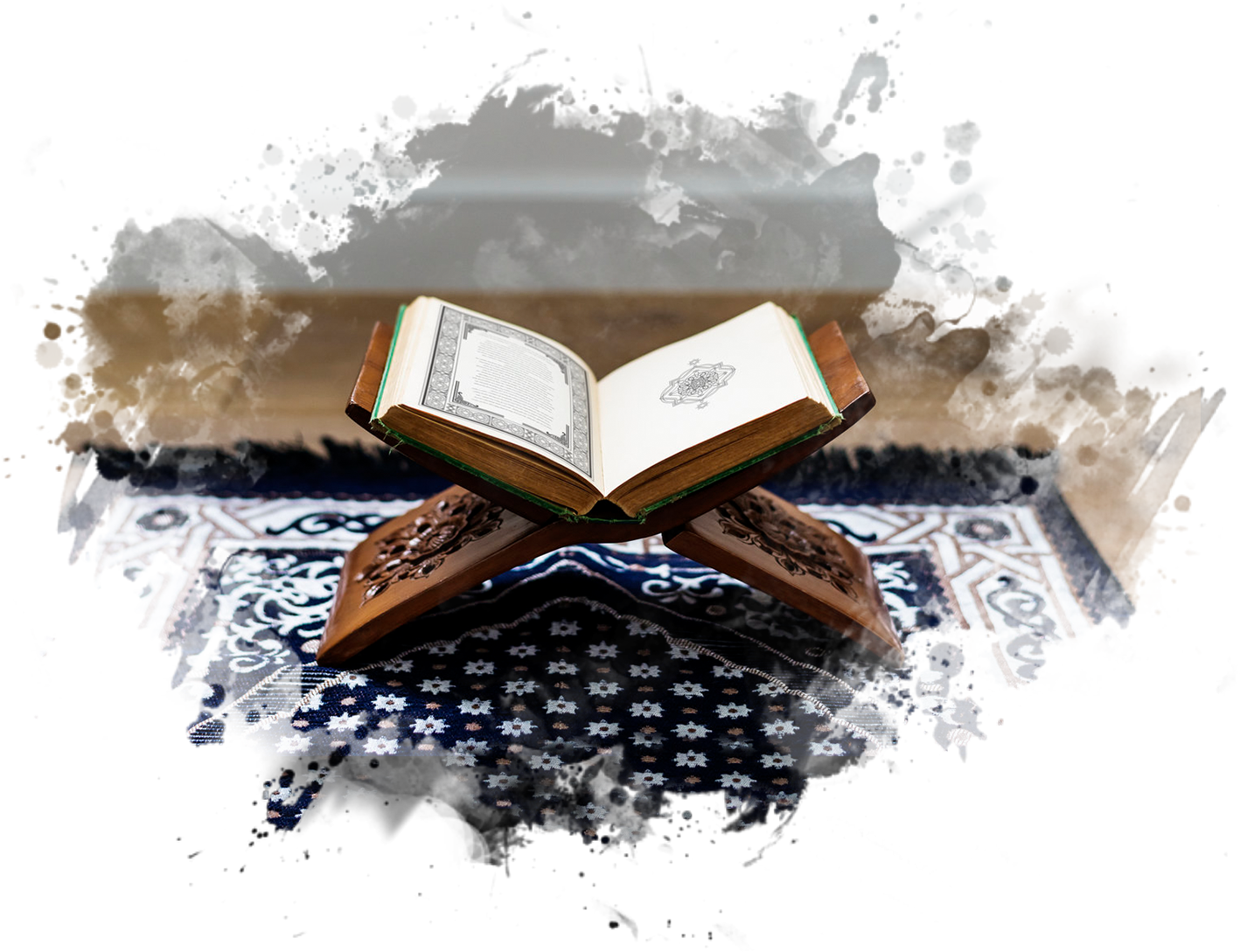
While being recorded on different types of materials (parchment, leather, camels’ scapula, wooden tablets, stones, etc.) used for writing at that time, the Qur’an was memorized wholly by the Prophet and a large number of his companions and partly by every Muslim. Every Muslim is required to memorize at least a few verses of the Qur’an because the recital of some of its verses is an essential part of the daily salat (Namaz) performed five times a day. Moreover, recitation of the Quran is itself a form of worship which Muslims are recommended to perform. Apart from reciting the Qur’an in and outside the regular namaz and regularly in the salat al-tahajjud (late night prayer), the Prophet (R.A) would recite to angel Gabriel in the month of Ramadhan the whole Qur’an (so far revealed). In Ramadhan preceding his death, angel Gabriel made him recite it to him twice.
During the period of the Prophet, the verses and chapters of the Qur’an recorded on different materials were not placed together. During the period of Abu Bakr (R.A), the first caliph of Islam, seventy famous hafiz[2] (men who completely memorized Quran) were martyred in the battle of Yamama. Now it was felt necessary to safeguard the Qur’an against the possibility of being lost and to compile it in a proper book form.
The task was assigned to Zayid ibn Thabit (R.A), the chief scribe of the wahy. He accomplished this job under the supervision of the Sahaba (companions) of the Prophet (pbuh). The final and complete version was checked and approved by all who heard the Qur’an from the Prophet (pbuh) and committed it to their memories and hearts. This was done less than two years after the death of the Prophet (pbuh). Revelations were still fresh and alive in the minds of the scribes, hafizs and other companions of the Prophet. The manuscript prepared by Zayid (R.A) was deposited with Abu Bakr (R.A) and after his death, with ‘Umar (R.A), the second caliph. When ‘Umar (R.A) died, the manuscript passed on to his daughter Hafsa (R.A).
The period of ‘Uthman (R.A), the third caliph, witnessed vast expansion of the Islamic state; Muslims scattered from the capital and a large number of converts (speaking languages other than Arabic) entered the fold of Islam. Many of the people who did not see the Prophet (pbuh) or hear him started committing mistakes in reading the Qur’an. Differences in recitation and intonation began to cause disputes among Muslims. ‘Uthman (R.A) swiftly acted to meet the situation. After consultation with all the leading authorities, he formed a committee of four members from among the former scribes of revelations including Zayid ibn Thabit (R.A). The committee was entrusted to prepare copies of the compilation prepared during the period of Abu Bakr(R.A)[1] after a thorough review. All the copies in use were collected and replaced by one standard copy which was to be used according to the accent and dialect of Quraish, the very same dialect in which the Qur’an was revealed. The authorized version bore the seal and signature of ‘Uthman (R.A). This was done within nineteen years of the death of the Prophet (pbuh). From that time onwards, the same version has been in use without the slightest change in words or order or even diacritical marks. Copies bearing the signature of ‘Uthman (R.A) still exist in Tashkent and Istanbul.
The Qur’an, as it exists today in millions of copies, retains the purity of the original text compiled fourteen centuries ago. Moreover, there are thousands of hafizs (both Arabs and non-Arabs) all over the world who are preserving the sacred book in their hearts. This unique feature of the Qur’an is one of its many miracles which testifies to the truth contained in the promise made by God with regard to its preservation.[2] The purity of the text of the Qur’an through fourteen centuries is a clear evidence of the eternal care with which the divine book is guarded through all ages.
From these facts, it has been concluded by the scholars that the Qur’an stands today as it first came down, and as it always will be. To it there has never been any addition; from it there was no omission; and in it there occurred no corruption. Its history is as clear as daylight; its authority is unquestionable; and its complete preservation is beyond doubt ”

[2] Ibid., No. 228.
[3] Ibid., No. 218.
[4] Ibid., No. 223.
[5] Ibid., No. 198.
[6] Sahih al-Bukhari, (Damuscus: 1993), 1:21.
[1] Fazlie, 1993, p. 1.
[1] There are hundreds of books, some in large volumes, written on the unique characteristics (I’jaz) of the Qur’an.
[2] Arberry, The Koran Interpreted, (Oxford: 1990), pp. x-xi.
[3] For details, see Scientific Indications in the Holy Qur’an, Islamic Foundation Bangladesh, Dhaka, 1990.
[4] Maurice Bucaille, The Bible, The Qur’an and Science, (Paris: 976), pp. 251-51
[5] For details see, Khan, op., cit
[1] SabunI, p.61.
[2] See the Qur’an, 15:9,
[3] A. Yusuf Ali, The Holy Qur’an, Translation and Commentary, (Beirut: 1403H), fn. 1944, p. 638.
[1] Sabuni, al-Tibydnfi ‘UIum al-Qur’an, (Beirut: 1985) p.52
[2] Hafiz means one who has memorized the whole Qur’an.
[1] For details, sec, Dr. Mofakhkbar Hussain Khan, English Translations of the Holy Qur’an: A Biobibliographic Study, (Singapore:1997).
[1] For details, see Sarkar, pp. 297-301
[2] Wilkins, 1993, p. 90.
[1] Theertha, p.49.
[1] 5 ibid., p.6.
[2] Ibid.,p.8.
[3] RV, p. x.
[1] PDR., p. 344.
[2] Wilkins, 1993, p. 6.
[1] Theertha, pp. 116.
